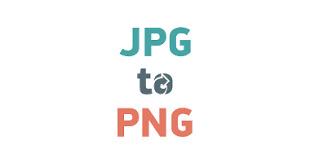How are JPG and PNG files different?
Introduction
In the digital realm, images are ubiquitous, enriching our online experiences, communication, and creativity. However, not all image file formats are created equal. Two of the most common formats, JPG (or JPEG) and PNG, each have distinct characteristics and applications. Understanding the differences between these formats is essential for optimizing image quality, file size, and compatibility. In this article, we'll delve into the nuances of JPG and PNG files, exploring their differences, advantages, and best use cases.
Understanding JPG (JPEG) Files:
JPG (Joint Photographic Experts Group) is a widely used image format known for its efficient compression algorithm, making it ideal for photographs and complex images.
JPG files employ lossy compression, which means that some image data is discarded during compression to reduce file size. This can result in a slight loss of image quality, especially with high compression settings.
JPG files support millions of colors and are well-suited for photographs, digital art, and images with gradients or subtle color variations.
The compression level of JPG files can be adjusted to balance file size and image quality. Higher compression levels result in smaller file sizes but may compromise image clarity.
Exploring PNG Files:
PNG (Portable Network Graphics) is a versatile image format known for its lossless compression and support for transparency.
PNG files use lossless compression, preserving all image data without sacrificing quality. This makes them ideal for graphics, logos, and images with sharp edges or text.
PNG files support alpha channel transparency, allowing for smooth blending of images over different backgrounds. This transparency feature is especially useful for web design and graphic design projects.
While Transfer JPG to PNG files tend to have larger file sizes compared to JPG files, they offer superior image quality and versatility, particularly for images with text or intricate details.
Differences in Compression and Quality:
The primary difference between JPG and PNG files lies in their compression methods and resulting image quality.
JPG files use lossy compression, which sacrifices some image data to achieve smaller file sizes. This compression method is suitable for photographs and images with complex color gradients.
PNG files, on the other hand, utilize lossless compression, preserving all image data without compromising quality. This makes them ideal for graphics, logos, and images with text or transparency requirements.
Best Use Cases for Each Format
JPG files are best suited for photographs, digital art, and images with complex color gradients. They are commonly used for web images, social media posts, and digital photography.
PNG files are preferred for graphics, logos, and images with sharp edges, text, or transparency requirements. They are commonly used for web design, graphic design, and illustrations.
Considerations for Web Use:
When optimizing images for web use, consider the balance between file size and image quality.
For photographs and images with complex color gradients, JPG files with moderate compression settings are recommended to minimize file size while maintaining acceptable image quality.
For graphics, logos, and images with text or transparency requirements, PNG files are preferred to preserve image clarity and transparency effects.
Conclusion
In conclusion, understanding the differences between JPG and PNG files is essential for optimizing image quality, file size, and compatibility in various digital applications. While JPG files are suitable for photographs and images with complex color gradients, JPG file to PNG files excel in preserving image clarity, transparency, and text. By choosing the appropriate file format based on the specific requirements of each image, users can ensure optimal visual impact and performance in their digital projects.
Read more article:- Wiuwi

